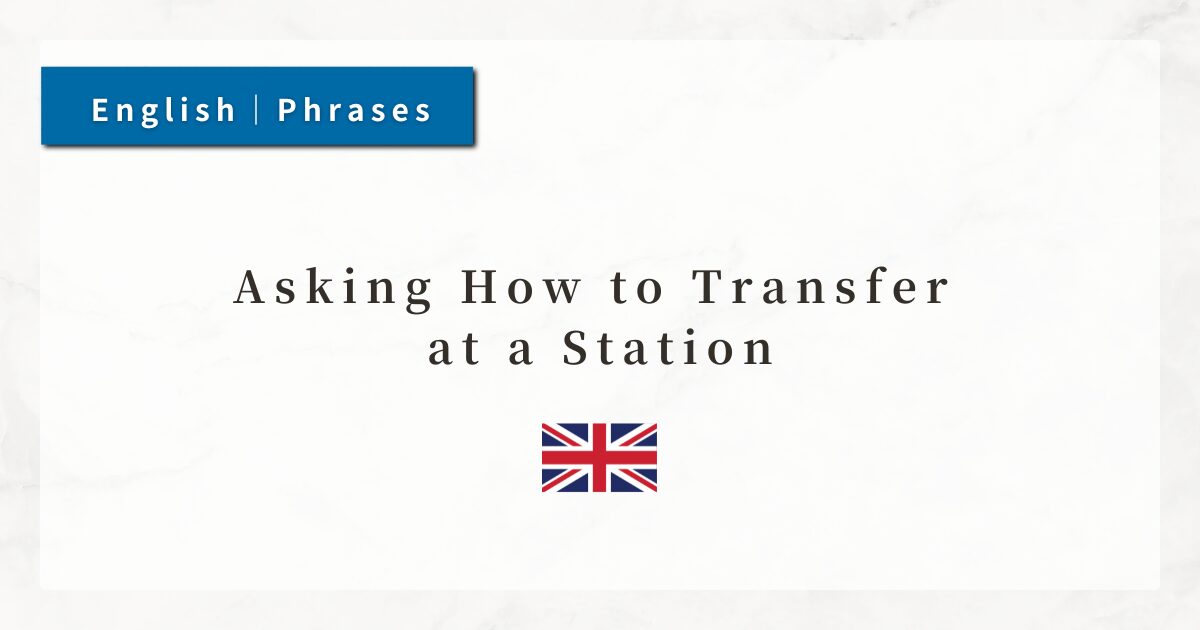#16 Asking How to Transfer at a Station|Useful English Phrases for Travelers

When traveling by train, it is often necessary to transfer within a station in order to reach your destination.
If I can ask questions such as “Where should I go to transfer to the Central Line?”, “Which platform is it?”, or “Which track does it depart from?”, I will be able to move smoothly without getting lost.
In this lesson, I will introduce some essential English expressions for asking how to transfer at a station, along with grammar and word order points to remember.
Dialogue

Excuse me, how can I transfer to the Central Line?

You need to go down the stairs and follow the signs to Platform 2.

Is it far from here?

No, just a two-minute walk. It’s well signposted.

Great, thank you very much.

You’re welcome. Have a good trip!
1. Asking How to Transfer
When I want to ask “How can I transfer to the Central Line?” at a station, I can use the phrase “How can I transfer to ~?”.
The structure “How can I ~?” means “What should I do to ~?”, making it a polite and practical question.
The verb phrase “transfer to” is commonly used in railway and subway contexts and is slightly more formal than “change to”.
- How can I transfer to the Central Line?
- How can I transfer to the express train?
This phrase leaves a polite impression, making it especially useful in travel situations.
2. Understanding Directions in a Station
To reach a platform or exit, it is essential to understand expressions that indicate direction. One basic structure is “Go + direction + noun.”
- Go down the stairs.
→ “go down” means “move downward.” Adding “the stairs” specifies the action. - Go up to the ticket gate.
→ “go up” means “move upward,” often used in subways.
Another frequently used expression is “Follow the signs to ~.”
- Follow the signs to Platform 2.
- Follow the signs to the exit.
By remembering these “action + place” patterns, I can easily understand and use essential travel expressions inside stations.
3. Checking Distance or Time
After receiving directions, I may want to confirm how far it is. In this case, I can ask “Is it far from here?”
Common responses include:
- No, it’s just a short walk.
- It’s about five minutes on foot.
- It’s not far. Just follow the signs.
4. Reassuring with Signs
The phrase “It’s well signposted.” reassures someone by indicating that signs are clearly displayed and easy to follow.
The word signpost means “guidepost” or “signboard.” Its past participle signposted is often used as an adjective to mean “clearly marked with signs.”
Similar expressions include:
- It’s clearly marked.
- There are signs everywhere.
Here, signposted is grammatically a past participle but frequently functions as an adjective, which is a useful point to note.
Summary
- How can I transfer to the Central Line?
→ A polite way to ask how to transfer. - Go down the stairs.
→ A basic expression for station movement. - Follow the signs to Platform 2.
→ A standard phrase used when giving directions. - Is it far from here?
→ A useful question to check distance or time. - It’s well signposted.
→ A reassuring phrase indicating clear guidance.




